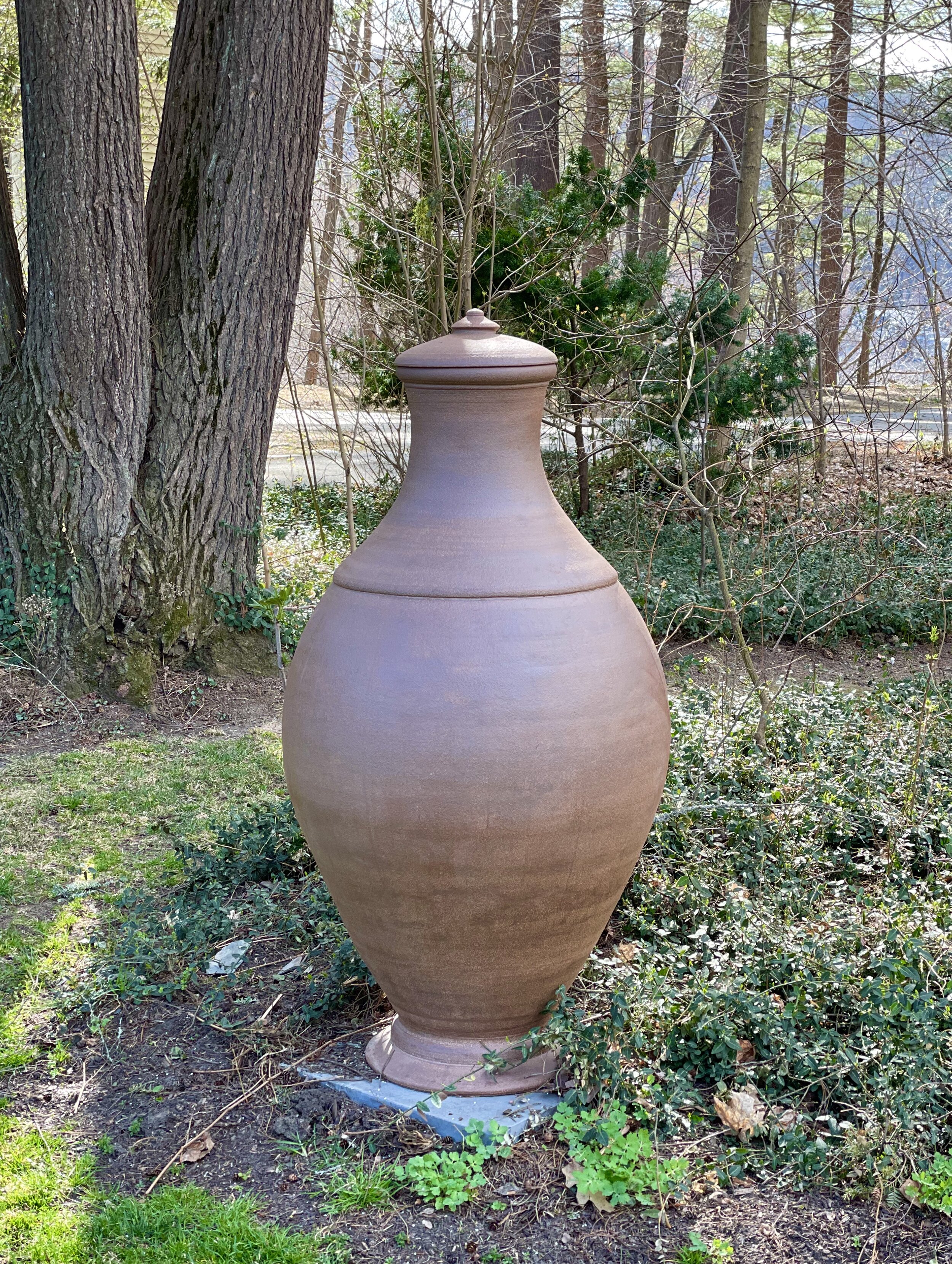Stephen Procter
Stephen Procter stumbled into clay in his mid-forties. His curiosity was first aroused when he watched his young daughter working on a kick wheel in a kids' pottery class. To him, “…it was impressive to see the clay transform, but even more remarkable to sense the meditative aura that surrounds a potter fully intent on throwing.” Centering is both an inner and outer practice. This experience inspired him to take an introductory course at a community clay studio.
Procter knew that he wanted to work at large scale from the outset because he loved the seemingly animate aura of a good large pot. Learning to throw did not come easily to Procter, but he was seduced by the wheel nonetheless -- as much by the sensuous pleasures offered to the hand as by the transformation of mud into a form that embodied intention and intelligence.
Renting shared studio space off and on for several years enabled him to gradually find his way to the materials, tools, and techniques he needed to begin achieving scale with grace ("dancing elephants," as one studio mate described those early pieces). The loss rate was often daunting; High tolerance for failure is an essential character attribute for anyone who wants to work in ceramics at large scale.
In 2008 he invested everything he had in outfitting his own studio and building the kiln he needed. Procter says he is grateful to the people who offered advice, information, and encouragement to make the leap. "The community's generosity of spirit was a large part of what drew me to make a career change and join the tribe of artists and potters.”
Procter was surprised to find that his previous professional life as a classical guitarist provided a good preparation: The elements of music -- flow, rhythm, growth, articulation, repetition, harmony, contrast -- have analogous expression in satisfying physical forms. The musician plays with them in sound and time, the potter/sculptor plays with them in clay and space. Just as a musician works a phrase to discover exactly the right swell and inflection, the ceramic artist works a curve to attain the arc that awakens the spirit. In either medium the subtlest alteration can make the difference between a gesture that lifts the veil and one that's impotent. “That's a mystery I do not tire of exploring.”


